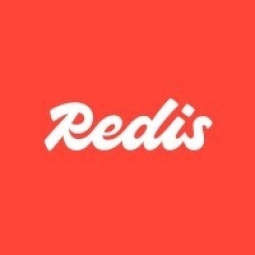技术
- 功能应用 - 企业资源规划系统 (ERP)
- 基础设施即服务 (IaaS) - 云数据库
适用行业
- 建筑物
- 建筑与基础设施
适用功能
- 产品研发
- 销售与市场营销
用例
- 网络安全
- 实时定位系统 (RTLS)
服务
- 云规划/设计/实施服务
- 网络安全服务
关于客户
Voodoo 是全球领先的移动游戏和应用程序发行商和开发商。该公司成立于 2013 年,累计下载量超过 60 亿次,为 200 多种游戏的 3 亿活跃用户提供支持。该公司在全球八个办事处拥有约 700 名员工。 Voodoo 的产品之一是 Wizz,这是一款专为青少年设计的交友社交应用程序。 Wizz 在美国、英国、加拿大和澳大利亚拥有超过 500 万用户,并计划进一步扩张。该应用程序允许 Z 世代青少年结识新朋友、聊天、玩游戏、交朋友,创造了一种新的社交娱乐类别。 Voodoo 为 Wizz 制定了雄心勃勃的计划,旨在与 Facebook 和 TikTok 等行业领导者竞争。
挑战
Voodoo 是 Wizz 的母公司,Wizz 是一款专为青少年设计的交友社交应用程序,它面临着重大挑战。该应用程序在美国、英国、加拿大和澳大利亚拥有超过 500 万用户,在高峰流量期间必须支持每秒 88,000 次查询 (QPS)。这需要一个能够处理数亿用户的弹性、高吞吐量、低延迟的数据库。该公司雄心勃勃的计划将该应用程序的覆盖范围扩大到全球其他 23 个国家,这进一步加剧了这一挑战。只有八人的小型技术团队需要一个易于部署、管理和维护,同时功能强大、经济高效且可扩展的解决方案。
解决方案
Wizz 转向 Google Cloud 上的 Redis Enterprise 来满足其需求。 Redis Enterprise 的核心功能(例如微缓存、分片、排行榜、速率限制和 PubSub)使 Wizz 能够创建一个易于管理和使用的高度可用的社交娱乐环境。最初,Wizz 以 Google Cloud Memorystore 的形式部署 Redis,这是一种完全托管的内存数据存储服务。然而,他们很快意识到,随着该应用程序在全球范围内的流行,他们需要专门的 Redis 支持和更强大的功能,以确保更低的延迟和可靠的可扩展性。结果,他们与Redis建立了直接合同。 Redis Enterprise 将有关发送、接收和读取的消息的数据存储在支持无状态应用程序进程的分布式缓存引擎中,最大限度地减少缓存数据的重复,并几乎消除对外部数据源的请求。 Wizz 还使用 Redis Enterprise 进行会话管理和会话状态监控。
运营影响
数量效益

Case Study missing?
Start adding your own!
Register with your work email and create a new case study profile for your business.
相关案例.

Case Study
Energy Saving & Power Monitoring System
Recently a university in Taiwan was experiencing dramatic power usage increases due to its growing number of campus buildings and students. Aiming to analyze their power consumption and increase their power efficiency across 52 buildings, the university wanted to build a power management system utilizing web-based hardware and software. With these goals in mind, they contacted Advantech to help them develop their system and provide them with the means to save energy in the years to come.

Case Study
IoT System for Tunnel Construction
The Zenitaka Corporation ('Zenitaka') has two major business areas: its architectural business focuses on structures such as government buildings, office buildings, and commercial facilities, while its civil engineering business is targeted at structures such as tunnels, bridges and dams. Within these areas, there presented two issues that have always persisted in regard to the construction of mountain tunnels. These issues are 'improving safety" and "reducing energy consumption". Mountain tunnels construction requires a massive amount of electricity. This is because there are many kinds of electrical equipment being used day and night, including construction machinery, construction lighting, and ventilating fan. Despite this, the amount of power consumption is generally not tightly managed. In many cases, the exact amount of power consumption is only ascertained when the bill from the power company becomes available. Sometimes, corporations install demand-monitoring equipment to help curb the maximum power demanded. However, even in these cases, the devices only allow the total volume of power consumption to be ascertained, or they may issue warnings to prevent the contracted volume of power from being exceeded. In order to tackle the issue of reducing power consumption, it was first necessary to obtain an accurate breakdown of how much power was being used in each particular area. In other words, we needed to be able to visualize the amount of power being consumed. Safety, was also not being managed very rigorously. Even now, tunnel construction sites often use a 'name label' system for managing entry into the work site. Specifically, red labels with white reverse sides that bear the workers' names on both sides are displayed at the tunnel work site entrance. The workers themselves then flip the name label to the appropriate side when entering or exiting from the work site to indicate whether or not they are working inside the tunnel at any given time. If a worker forgets to flip his or her name label when entering or exiting from the tunnel, management cannot be performed effectively. In order to tackle the challenges mentioned above, Zenitaka decided to build a system that could improve the safety of tunnel construction as well as reduce the amount of power consumed. In other words, this new system would facilitate a clear picture of which workers were working in each location at the mountain tunnel construction site, as well as which processes were being carried out at those respective locations at any given time. The system would maintain the safety of all workers while also carefully controlling the electrical equipment to reduce unnecessary power consumption. Having decided on the concept, our next concern was whether there existed any kind of robust hardware that would not break down at the construction work site, that could move freely in response to changes in the working environment, and that could accurately detect workers and vehicles using radio frequency identification (RFID). Given that this system would involve many components that were new to Zenitaka, we decided to enlist the cooperation of E.I.Sol Co., Ltd. ('E.I.Sol') as our joint development partner, as they had provided us with a highly practical proposal.

Case Study
Intelligent Building Automation System and Energy Saving Solution
One of the most difficult problems facing the world is conserving energy in buildings. However, it is not easy to have a cost-effective solution to reduce energy usage in a building. One solution for saving energy is to implement an intelligent building automation system (BAS) which can be controlled according to its schedule. In Indonesia a large university with a five floor building and 22 classrooms wanted to save the amount of energy being used.

Case Study
Powering Smart Home Automation solutions with IoT for Energy conservation
Many industry leaders that offer Smart Energy Management products & solutions face challenges including:How to build a scalable platform that can automatically scale-up to on-board ‘n’ number of Smart home devicesData security, solution availability, and reliability are the other critical factors to deal withHow to create a robust common IoT platform that handles any kind of smart devicesHow to enable data management capabilities that would help in intelligent decision-making

Case Study
Splunk Partnership Ties Together Big Data & IoT Services
Splunk was faced with the need to meet emerging customer demands for interfacing IoT projects to its suite of services. The company required an IoT partner that would be able to easily and quickly integrate with its Splunk Enterprise platform, rather than allocating development resources and time to building out an IoT interface and application platform.








